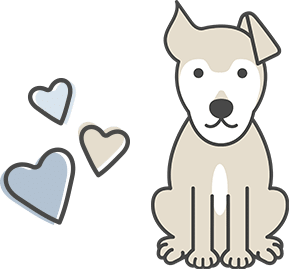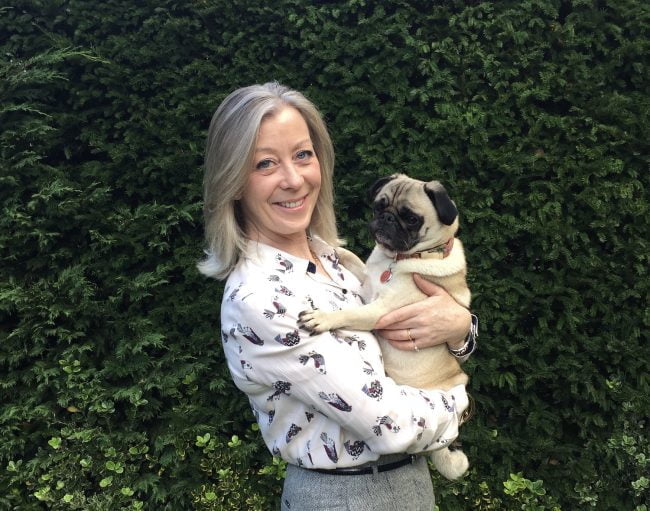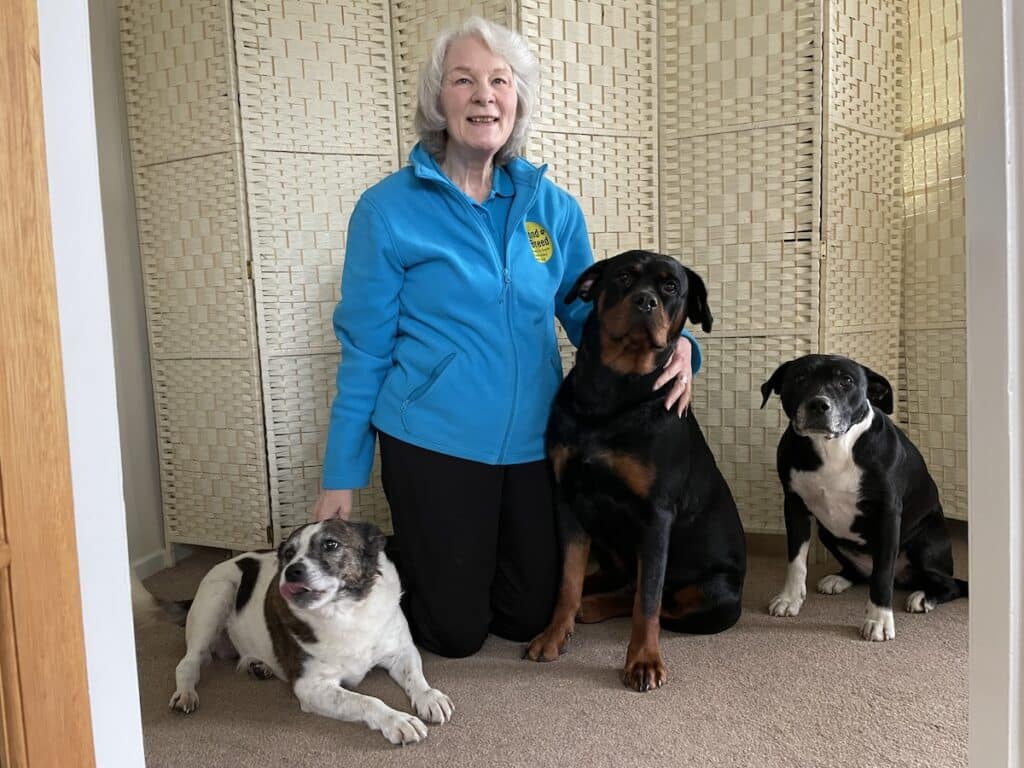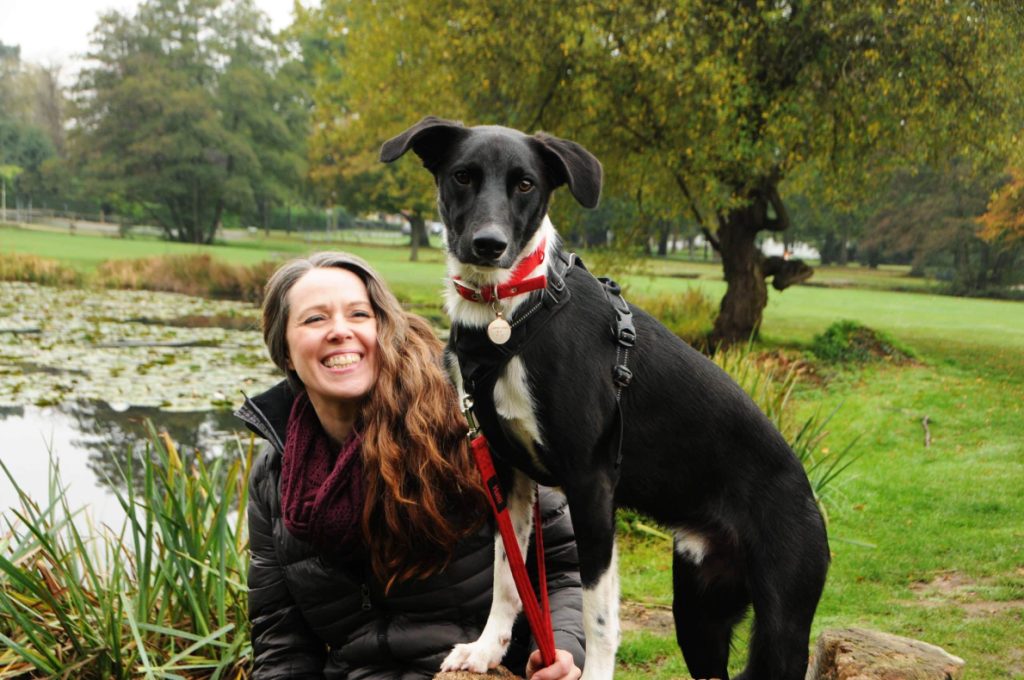We’re super excited to be speaking to Cate Archer – AKA Doug The Pug Therapy Dog’s human.
Kimberley from City Dog Expert very kindly introduced us via Instagram.
Doug, eight, lives with Chocolate Lab Molly, 13, and cats Tiger, 21, and Archie, 14, in Buckinghamshire and works as a Pets As Therapy (PAT) dog.
He visits people in a care home, a hospice for adults with life limiting conditions, aids children read in a primary and junior school, helps at hostel for children between permanent homes, and comforts people suffering with mental illness.
With almost 20,000 followers on Instagram and his own children’s book, Doug has warmed hearts all over the world.
So we were thrilled to learn all about his work when we chatted to his owner, Cate.

Have you always had dogs?
I grew up on a farm in Northumberland so we had dogs as a child but as an adult I was without a dog for 20 years.
Finally I said to my husband, ‘We’re definitely getting a dog now,’ and Molly, our gorgeous Chocolate Lab came along.
She’s 13 now but still leaps around like Bambi so she’s not suited to be a PAT dog.
But Doug is the perfect PAT dog because he’s so quiet, gentle and discreet and they’re great pals.
How did Doug come into your lives?
We had dear family member who was very poorly and it was thought having a dog would reduce the awful feelings of loneliness and isolation that come with long term chronic illness.
At first I was reluctant to get a dog as we had Molly, but she was very big, strong and bony and it was felt a little dog would bring more comfort.
Doug was everything we could have wished for. When this very special family member got better, we felt he had so much love to share and that’s how he came to be a PAT dog.
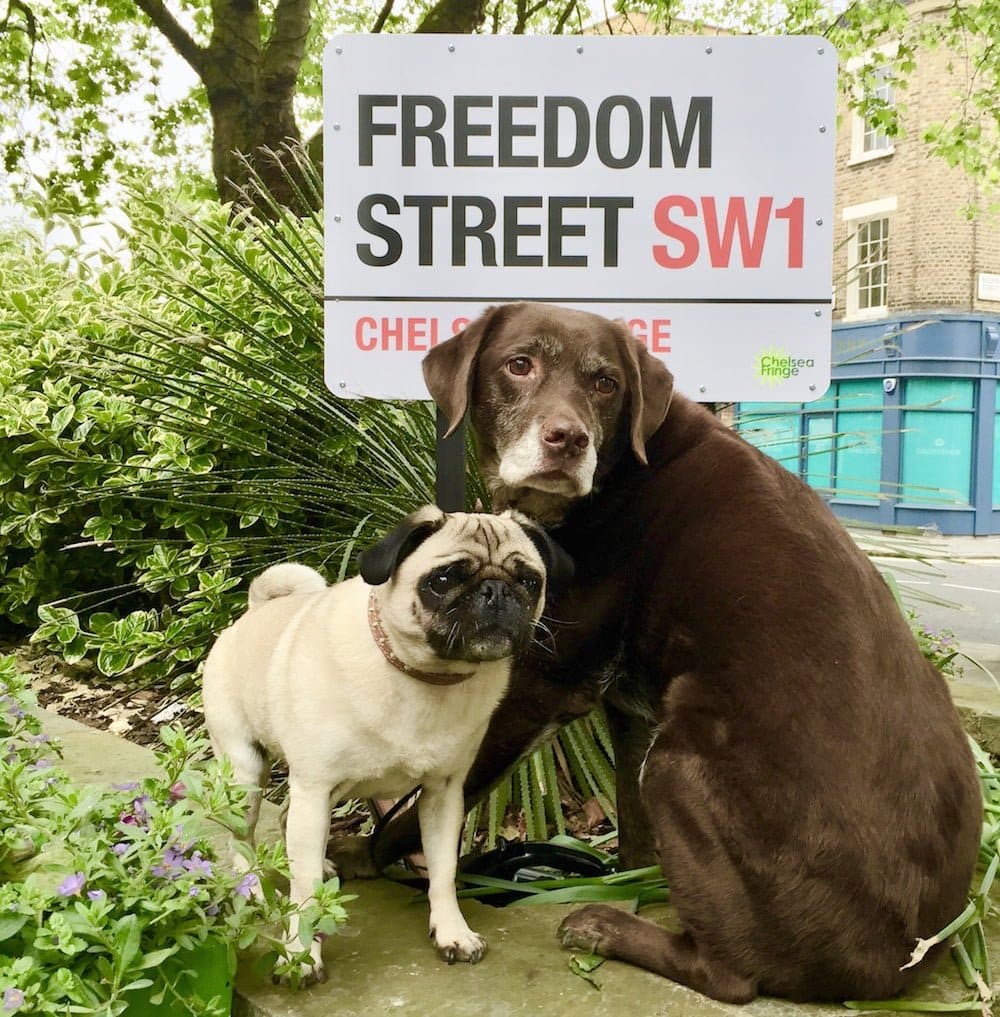
So you started volunteering together?
After giving up full time work to be a carer, for seven whole years, I’d reached a stage in my life where I didn’t want to return to conventional employment – so, we now work voluntarily.
Because Doug had made such a massive difference to our family, we saw how special the human animal bond was.
It made me truly believe in companion animal therapy and I knew that was the route I wanted to go down.
I used to work as a special needs teacher and that has given me a little more patience, empathy and understanding – but people without my background are every bit as effective in the partnership with their dog.
Every day, whether it’s someone he sees in real life, or someone virtual who we speak to online, I know he’s making a positive difference.
How does the process of becoming a PAT dog work?
I knew he was a gentle family dog and learned PAT needed dogs who were predictable, trustworthy and wouldn’t react negatively to any sounds, actions or behaviours.
Size or breed is of no consequence. We applied as a duo, myself and Doug, so I had to give references, and Doug had scrupulous temperament assessments.
Once that was complete, I could choose somewhere dear to my heart to visit or they could find places close to me.
Their support is fantastic, and our visits are fully insured too so we have peace of mind.
Sometimes people get in touch via Instagram or my website and ask if we can come along and give them a boost.
What would you say is the most rewarding part of your work?
I love all of it. With the reading programme, it’s so rewarding to think that he can help them have a better experience of childhood and school life.
A little boy at a school who lost his dad shared his grief with Doug, opening up to him and burying his head in his fluffy neck to cry. He’d rub Doug’s ears over his top lip to comfort himself.
Then I may go in a care home and feel we have really lifted an older person’s day and stopped them from feeling so lonely and isolated.
With the elderly, if they have had a stroke and struggle with speech they can withdraw, and while they may be unclear to us, Doug is happy to listen.
With people with mental health challenges, it may be they don’t have a permanent home or access to a dentist or be able to go for a haircut and have their clothes laundered.
Doug greets that person more warmly than another human being could. Dogs are totally without judgement and stigma.
If someone has a limb missing or they are so scarred or disfigured they don’t feel confident going out, Doug doesn’t notice as it is of no consequence.
We all try to show that we aren’t uncomfortable or taken aback by things but with a dog it genuinely isn’t on their radar at all.
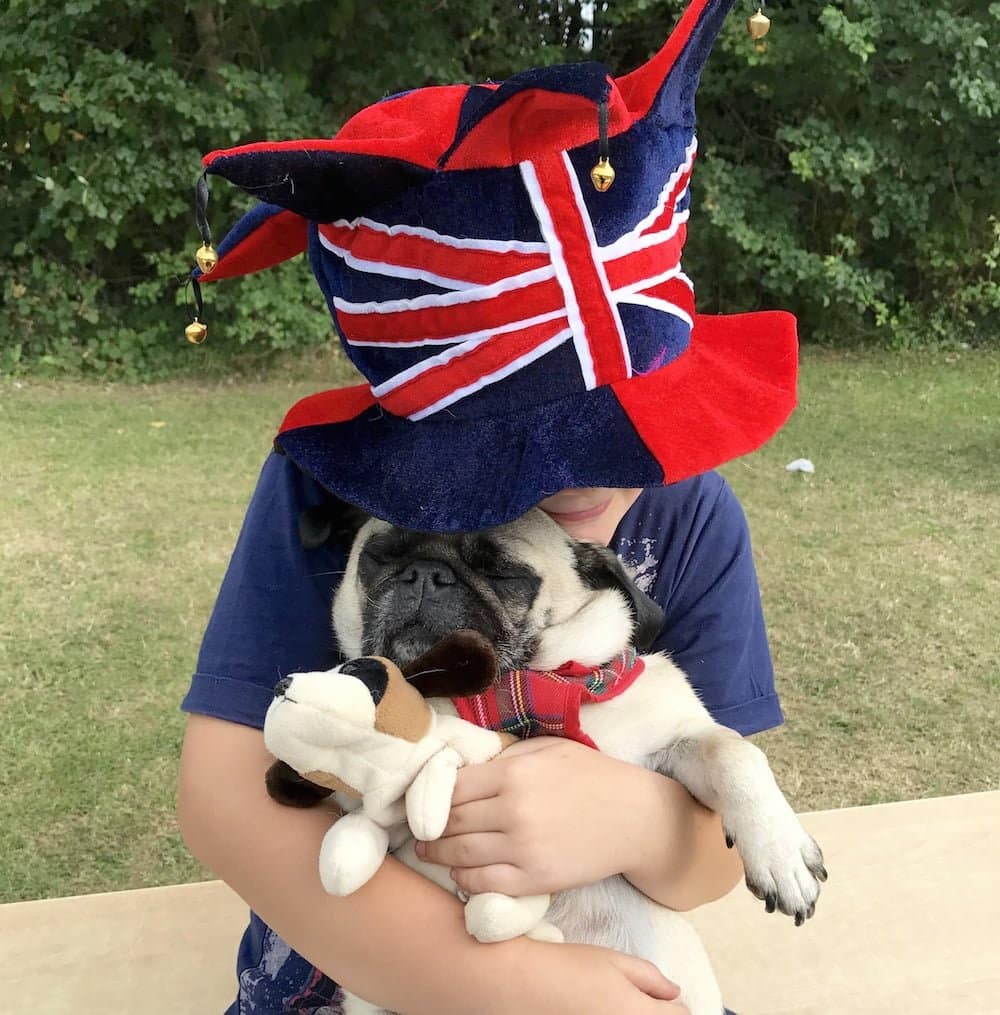
It must be emotional for you too?
Yes, and inevitably we have friends who pass away. When people are ill, we go to see them in hospital as often their family may be far away so they don’t have many visitors.
When their lives end, we go to funerals and we went to one and at the end the niece came over to me. We’d been seeing her aunt for about five years.
She said when they emptied her room they found so many letters and cards from Doug and photos that they knew he was very special to her. They’d buried her with a picture of him by her side in her coffin.
To lose the lady was very sad for us but it was so lovely her family had understood the bond with her and Doug.
A lot of your work is simply about kindness isn’t it?
Yes, the message in Doug’s book is about loving who and what we are and understanding that we all have something wonderful to offer.
If we could all think like a dog, the world would be a happier place. We try to spread kindness where we go and do what we can to make people’s lives better.
Aesop said: “No act of kindness, no matter how small, is ever wasted,” and I think that is our ethos.
Doug celebrates inclusion as well doesn’t he?
Yes, we once had a silly comment online about Doug being ‘gay’ and we shared a very tongue in cheek photo of him reading a book titled ‘Is your dog gay?’ to illustrate our views that gender preference is of no consequence whatsoever to who and what you are – and that we must be true to ourselves in order to be happy confident beings.
We work very hard to promote inclusion – Doug and all dogs show no judgement and have no stigma.
We want to celebrate what different people bring to our lives and I love being able to share that in what we do.
I feel that merely tolerating differences is just putting up with people – actually celebrating diversity is what illustrates real true inclusion.
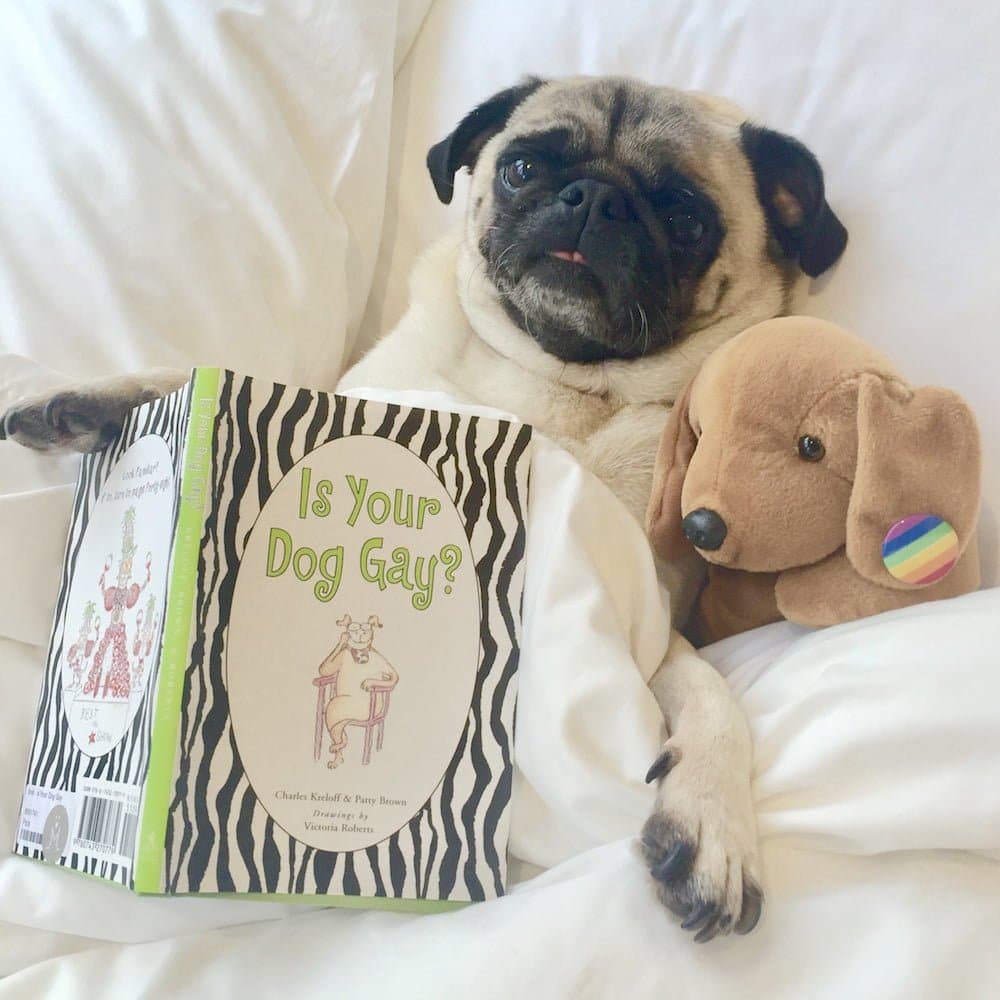
And you did a sleepout last October to help the homeless?
Yes, with a group called Glass Door – they take in rough sleepers that many organisations turn away. We raised over £2,400 which we split between Glass Door (www.glassdoor.org.uk)and Dogs On The Streets (www.dotslondon.co.uk) DOTS London support the health and welfare of the dogs living with their homeless owners.
We wanted to raise awareness that their dogs may be the only true loyal beings in their lives and should be valued.
We wanted to show that being homeless is not a lifestyle choice and people are genuinely there through circumstance.
None of us are beyond finding ourselves without a permanent home, however secure and confident we feel.
It was an honour to meet both teams, and something that would never have happened had it not been for Instagram.
Are there any stories that stay in your mind of people Doug has helped?
A 35-year-old man from America contacted me on Instagram. He’d been in a mental health unit for six weeks and in a very unhappy place.
He told me he’d been frightened and lonely and felt he was a drain on the world. Every day his girlfriend would read a page from Doug’s book.
It helped him learn he was worth something and that he was entitled to be part of this world and to have a happy life.
It was also beautifully empowering for him to acknowledge that he wasn’t just taking strength and support from his girlfriend but, in allowing himself to open up to her, that he was giving her the gift of being the best version of her own self.
He was able to embrace Doug’s ethos from the other side of the world and he is still in touch with us, and recently shared that they had got engaged.

What would you say to readers who are considering becoming PAT volunteers?
It’s wonderfully rewarding and something you can do as little or as much as you like and for a cause dear to your heart.
It’s a way to give a little back to something that matters to you. Not everyone can have a dog in their lives so by allowing them to share time with your pet is so special.
It is often thought that being good and kind to others is purely benevolent and altruistic, but helping others has been proven to improve health, happiness and longevity.
We have been blown away hearing Doug and Cate’s heartwarming tales and we hope you enjoyed them too.
You can keep up with their news or order books (all proceeds go to Pets As Therapy) on their website, www.dougthepugtherapydog.com and on Instagram , Facebook and Twitter.
To find out more about Pets As Therapy, visit https://petsastherapy.org
If you enjoyed this post, you might like to read about how Olaf the Zante Stray became a Pets As Therapy Dog or how Starina became owner Saza’s emotional support cat.

